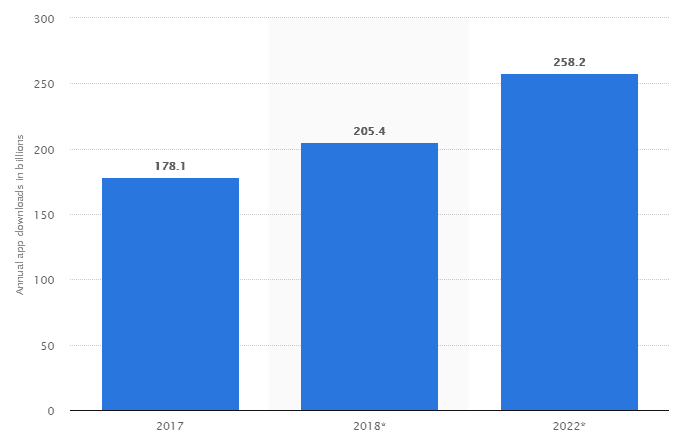
Attribution is an important component of online marketing. When you can track the method through which you obtained a lead or a customer, you can replicate the method and scale it to generate even more customer at a better ROI.
This is very easy to do with regular online marketing as most free analytics tools like Google Analytics and pixels (if you are using ads) can help you gain essential insights. But it gets tricky when you want to track mobile attribution as your regular analytics tool won’t provide sufficient data…
What is mobile attribution and how is it different?
Mobile attribution is when you track customer behaviour to help figure out what activities and strategies convinced them to install your app.
Everyday online marketing is easy to track as conversions occur directly on your website, but app installs don’t take place on your website. Instead, they happen mostly on the Apple and Android app stores.
This is why you need to use a different technique and set of tools to track which of your marketing and advertising strategies lead to the app install.
Why are the benefits of tracking mobile attribution?
In 2018 alone there were 205.4 billion app downloads. This figure is expected to climb to 258.2 billion downloads by 2022.

But the average app loses 77% of its daily active users in the first 3 days. This number goes up to 90% in 30 days and 95% in 90 days.
This means that if you get a 100 app installs a day, within the end of the month only 10 will remain active daily.
One way to combat not only the retention rate, but also get more installs at the same time is by better tracking your mobile attribution. If you have a deeper understanding of what lead someone to install your app and more information about their interests and demographics you can create a personalised experience that will get them to stick around longer. You can also use the data to modify the app landing page to improve conversions.
How do you get started with mobile attribution:
There are several different mobile attribution methods you can use. The ones you choose should depend on the platform (iOS, Android, Windows, etc.) and mobile devices you create the apps for. Here are some common trending mobile attribution methods that you can try…
Device ID:
Every mobile device out there is identified by a line of numbers and letters. This is known as the device ID and is stored on the device itself. Your app can retrieve this information when it is downloaded and installed. This works on both iOS and Android devices.
Fingerprinting:
Another popular method that works for both iOS and android devices is fingerprinting. This method gathers information about the device at the time when the link to the app is clicked and when the app is launched. You can also gather other important information like the location.
Install referrer:
Install referrer is an attribution model that works on Android devices only. Just like with the above two methods it sends a line of information to the Google Play Store. This method is highly accurate. Hence, if you are running an Android only app exclusively, you can give this method a go.
TV and radio attribution:

You cannot directly track TV and radio attributions as there are no links here. But you can categorise any organic installs that happen during or after the airing of a commercial as TV and radio attributions. If your ad is aired in a specific location, you can use the data from the above tracking methods to confirm TV or radio attribution as they inform you about the location as well.
How to make the most out of mobile attribution with deep linking:
The above methods help you track activity and gain more insights about attribution. But if you want to get the most out of this data, you need to incorporate another component, deep linking.
Deeplinks are special URLs which take people to a specific page on the app store. Have you ever tried to install an app on your mobile device and then been redirected to the app itself (as it was already installed)? This is deep linking in action.
Deeplinks gather data from mobile attribution to learn more about the user and redirect them to the right app landing page depending on the device (iOS or Android) or the app itself if it is already installed.
Deep linking will also help gather information like how they were referred, what campaign worked, etc.
This information can help improve conversion rates and deliver a personalised experience for each visit. This is why it is important to combine deep linking with attribution to get more installs, improve retention rates and boost your ROI.
Now implement mobile attribution and deeplinking in your mobile marketing strategy…
Now you have a better understanding about mobile attribution. So, make use of the knowledge you have gathered today to execute mobile attribution for your apps. And combine it with deeplinking to improve app downloads, upgrades and retention rates.
Have you still got any questions about mobile attribution? Did I forget to add anything important? Would you like to share some of your tips? Please leave your comments below.
If you found the above post useful and feel your followers will too, please share it with them by using the share buttons.
About Matt Rimm
Matt Rimm is an inbound marketer. He likes to write about social media marketing and lead generation.